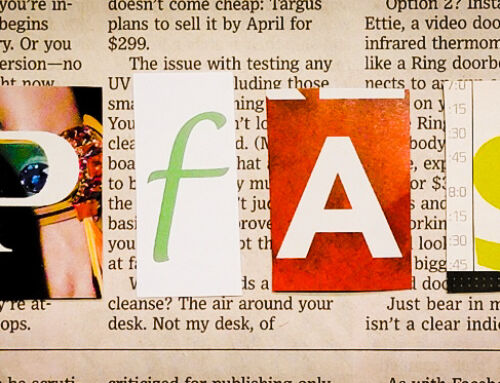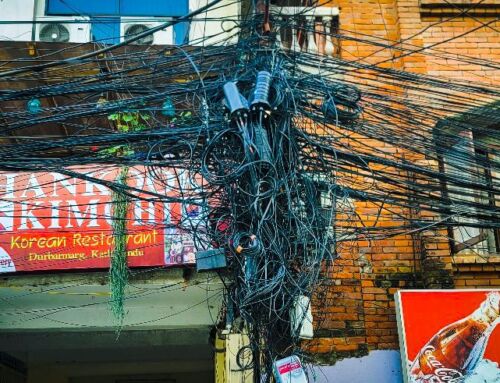View by Topic
Recent Articles
-
EPA Designates PFOA and PFOS as Hazardous Substances under Superfund LawSaturday, April 20th, 2024
-
Federal Government Finalizes New Efficiency Standards for LightbulbsSaturday, April 13th, 2024
-
2024 IECC is Final After Addressing Preemption IssuesSaturday, April 6th, 2024
-
Settlement Portends Broad Failure in Attempts to Ban Natural GasSaturday, March 30th, 2024
-
SEC Climate Disclosure Rule Stay and Venue Now in the 8th CircuitSaturday, March 23rd, 2024
View by Month/Year
“Green Building Law Update” Headlines
Recent Articles & News from
Stuart Kaplow’s blog
at GreenBuildingLawUpdate.com
- EPA Takes Action: PFOA and PFOS Now Hazardous Substances Under Superfund Law April 21, 2024
- Shedding Light on the Future: The Evolution of Lightbulbs in the Wake of New Energy Efficiency Standards April 14, 2024
- 2024 International Energy Conservation Code is Final After Addressing Preemption April 7, 2024
- Settlement Portends Broad Failure in Attempts to Ban Natural Gas March 31, 2024
Subscribe to the Green Building Law Update!
Stuart Kaplow brings his expertise and extensive experience to the table with his unique digital publication, "Green Building Law Update". Subscribers receive regular updates to keep them informed about important issues surrounding Environmental Law, Green Building & Real Estate Law, as well as the emerging demand for Environmental Social Governance (ESG).
Get fresh content through the lense of Stuart Kaplow's cutting-edge expertise, innovative commentary and insider perspective. Don't miss another issue! Subscribe below.

PACE Programs are Stepping Up the Pace
This article first appeared on my Green Building Law Update blog. The blog is intended for the entire environmental industrial complex, .. not just lawyers.
Please check out the blog and sign up for a weekly notice of new blog posts via email, at Green Building Law Update blog.
Property assessed clean energy (PACE) programs, where payments for energy efficiency, water conservation and renewable energy improvements to commercial real estate are made through a building owner’s property tax bill are beginning to hit their stride.
PACE state enabling statutes generally authorize local governments to work with private sector lenders to provide upfront low interest financing to property owners for qualified projects (e.g., HVAC system upgrades, photovoltaic systems, cool roofs, etc.), and to collect the repayment through annual assessments on the property’s real estate tax bill. The term of PACE financing can be extended up to 20 years, often resulting in utility and other cost savings that exceed the amount of the assessment payment.
The concept is not new, but nationally, residential PACE programs generally have been put on hold or foregone as a result of concerns of Fannie Mae, Freddie Mac, and the Federal Home Loan Banks, that issued a directive in February 2011 that Fannie Mae and Freddie Mac refrain from purchasing mortgage loans secured by properties with outstanding first lien PACE obligations.
There were not similar concerns expressed about commercial loans. However, the extent to which similar concerns apply to multi family commercial mortgages does not appear to be entirely resolved, although the U.S. Department of Energy assures that the earlier expressed concerns were specific to single family home mortgage lending.
The Department of Energy says that there are active commercial PACE programs in at least 9 states and DC and enabling laws enacted or programs in development in another 23 states.
PACE offer a host of benefits depending upon the program design, including: removing the barrier of a large upfront cash outlay by the property owner; allowing 100% financing of improvements in amounts over loan value ratios available in the marketplace, including without disturbing existing mortgage financing; underwriting tied to the property and improvements and not individual creditworthiness; repayment over a long period of time (often 20 up to years); low interest rates resulting from high security of repayment; reduced utility bills that can offset the payments; the obligation to repay runs with the property and not the owner; the improved properties have an increased value, benefiting both the owner and the property taxing authority; the owner may be eligible to take advantage of federal, state and local tax incentives; under most commercial leases the PACE payment (on a property tax bill) can be passed along to the tenant avoiding the ‘split incentive’ problem; local government can facilitate the program with no direct debt obligation; and more.
Most enablng laws allow the PACE financing of any equipment, device or material intended to improve energy efficiency, including in new construction, from automated energy control systems and HVAC replacement to insulation of any wall or roof and replacement roofing or measure reducing water usage as well as any other installation or modification that is a utility cost saving measure.
In the event of a default, the liability is a property tax lien collected by the local government with the priority associated with other real property tax liens, so existing mortgage holder consent is required.
Commercial PACE programs are still very new. Despite enabling laws in 32 states, local enactments are almost always also required and then the program must be ramped up by the local governments and there are few programs actually up and running today. Early programs were financed with a pooled revenue bond or for large projects a standalone bond, but today private lenders have entered the open market. WhileSonoma County was an early innovator, Connecticut has a widely admired statewide PACE program that is up and running. Maryland is more typical with a state enabling law passed in 2014, with SB 186, and local laws on the books in Montgomery County and Anne Arundel County, with at least one lender, Greenworks Lending, on board, but no PACE loans actually made yet. The Montgomery County program, hoping to close it first transaction in first quarter 2016, is among the most progressive in the nation when it makes easy for all lenders (including those brought to the table by borrowers) to participate and is not charging administrative fees (above that charged by the contracted program administrator).
There are now lenders eager to provide the upfront capital for PACE programs. The average building owner is desirous of reducing its utility bills. What is wanting is the broad regulatory framework that enables the ‘off balance sheet’ financing that is PACE lending.
PACE programs are good for the planet and good for business. There just needs to be more of them.









